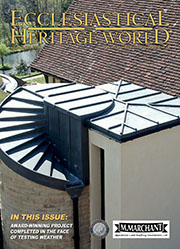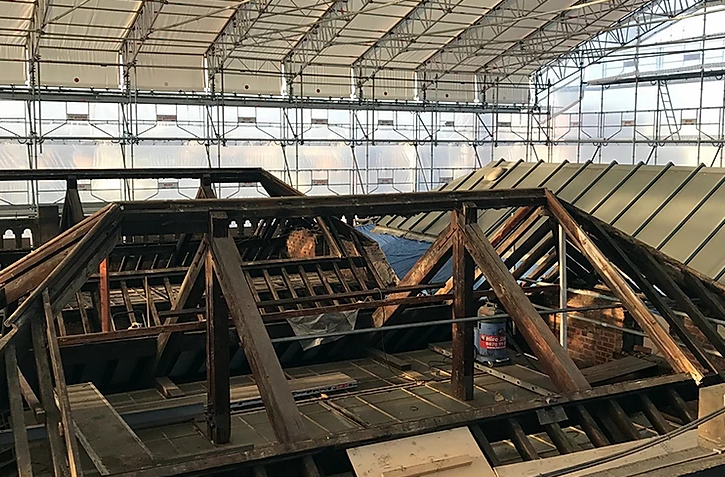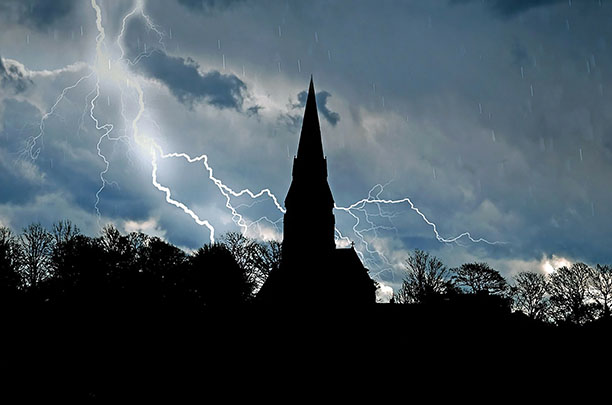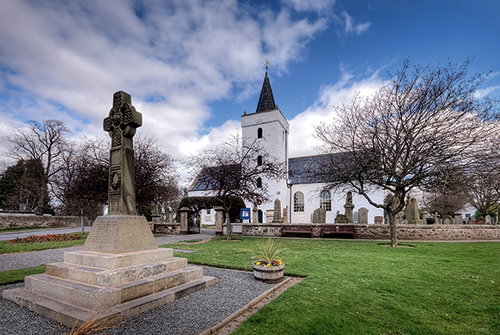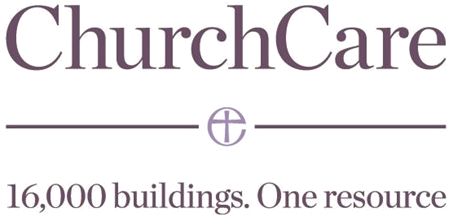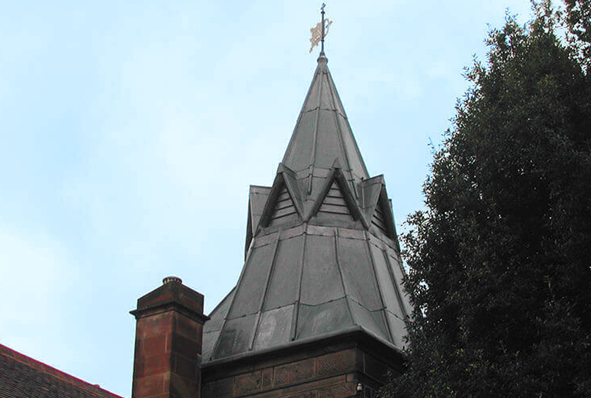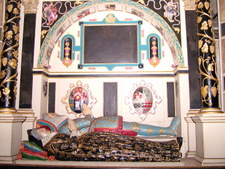Heritage Roofing
Heritage roofing - maintaining our iconic buildings
The UK is home to some of the most iconic buildings in the world, from stunning churches and cathedrals to historic stately homes. Each and every one of these remarkable feats of architecture requires regular maintenance to ensure they remain in the very best condition, allowing them to be enjoyed for generations.
Lightning Protection
When lightning strikes are you protected against this act of God?
The issue of lightning protection in churches is one that has exercised this publication for many years. In this four-part series of spotlights on the issue we will be revisiting various aspects of the subject, beginning with an overview of current thinking.
Traditional Lime
Lime: it’s better for buildings – and for the environment
It is now fairly well known that cement is not good for old buildings and that lime mortar should be used. But why? What are the advantages and what are the disadvantages? In order to begin to answer those questions it is necessary to understand the nature of traditional building, the process by which buildings used to be built, and how it differs from modern construction, the process by which we build today.
Audio Visual
Audio visual equipment in church buildings
This guidance is issued by the Church Buildings Council under section 55(1)(d) of the Dioceses, Mission and Pastoral Measure 2007. As it is statutory guidance, it must be considered with great care. The standards of good practice set out in the guidance should not be departed from unless the departure is justified by reasons that are spelled out clearly, logically and convincingly.
Read More...
CRE Events
All change at CRE: the UK’s ‘ideal church show’
The Christian Resources Exhibition (CRE), the UK’s largest church-related show, has changed hands in its 40th year and has been taken over by Quartz Business Media.
Insurance
You need to ensure that reasonable precautions are in place at your church to keep it safe for those who use it. To do this, you need to think about what might cause harm to people.
You will then need to decide if the precautions already in place are adequate. If they are not, you may need to identify further action to prevent any danger. When done formally, this is known as a risk assessment.
LPOW Grants
£23 million government package to support restoration of thousands of listed places of worship
Heritage Minister Sir Chris Bryant has announced that the Listed Places of Worship Grant Scheme will be extended into the next financial year, providing £23 million so that thousands of historical buildings, including churches, synagogues, mosques and temples, can carry out restoration work.
Lead Roofing
Lead is one of the oldest materials in the roofing industry and is still commonly used throughout the world today.
Lead roofing is a traditional roofing method which has been used in the industry for hundreds of years, and is therefore proven to be extremely reliable. Lead roofing, and sand-cast lead, in particular is ideal for old buildings such as churches or historical renovations, whereas milled lead roofing is a mass-produced alternative, used for precision and accuracy in homes and commercial buildings alike.
Home
Conservator’s amazing new find on 17th century tomb
Salisbury Cathedral conservator Dave Henson made a great discovery when he started the latest round of practical conservation work on the Monument to Sir Richard Mompesson (d.1627) and his wife Katherine. He found what is believed to be a 17th century polychromed Coat of Arms on the reverse of the stone supporting the Coat of Arms at the top and front of the monument. And the blazoning of the two Coats of Arms is almost identical.
Peter Martindale, polychrome expert, says “The Coat of Arms on the reverse of the monument is important historically and artistically, and quite rare. It appears not to have undergone a programme of treatment since being painted, its condition seems good, and it is therefore a valuable witness to the methods and materials of the time.”
One possibility is that it could be a ‘draft’ painting of the Coat of Arms found on the front of the armorial. It covers the entire back of the top section of the tomb, but is the only painting on the back of the tomb.
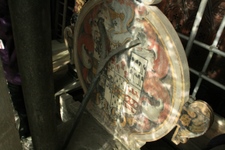
The Mompesson Tomb is an elaborate large wall table/ tomb chest of painted and gilded Chilmark stone, with recumbent effigies, and built after 1627. It has been repainted twice since the early 17th century original painting, the first repaint possibly late 17th/early 18th century and the second in 1964. It was originally located on the north side of the quire in the north nave aisle, perhaps in a position where both sides of the monument could be seen. It was moved to the south wall of the south side aisle in 1877 when the Father Willis organ was installed.







